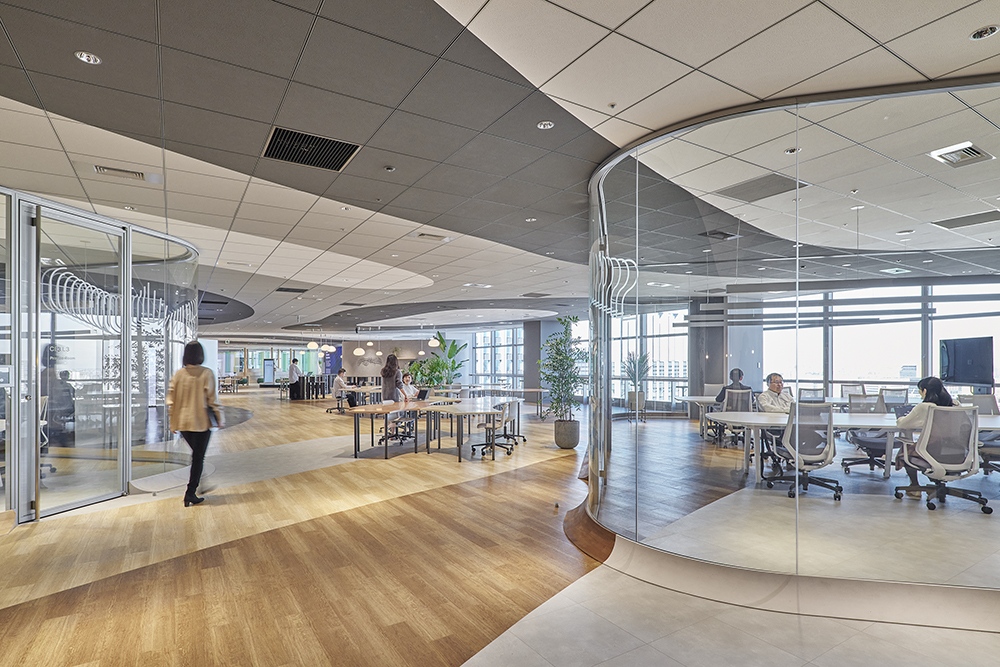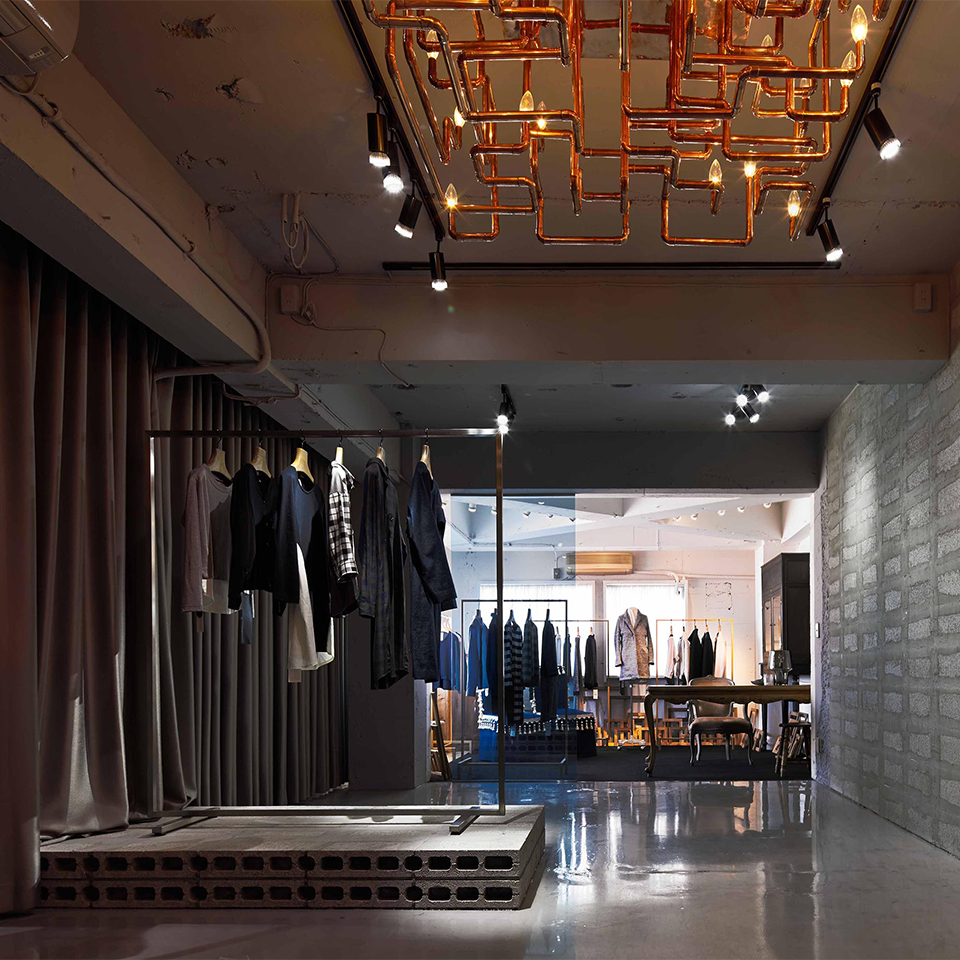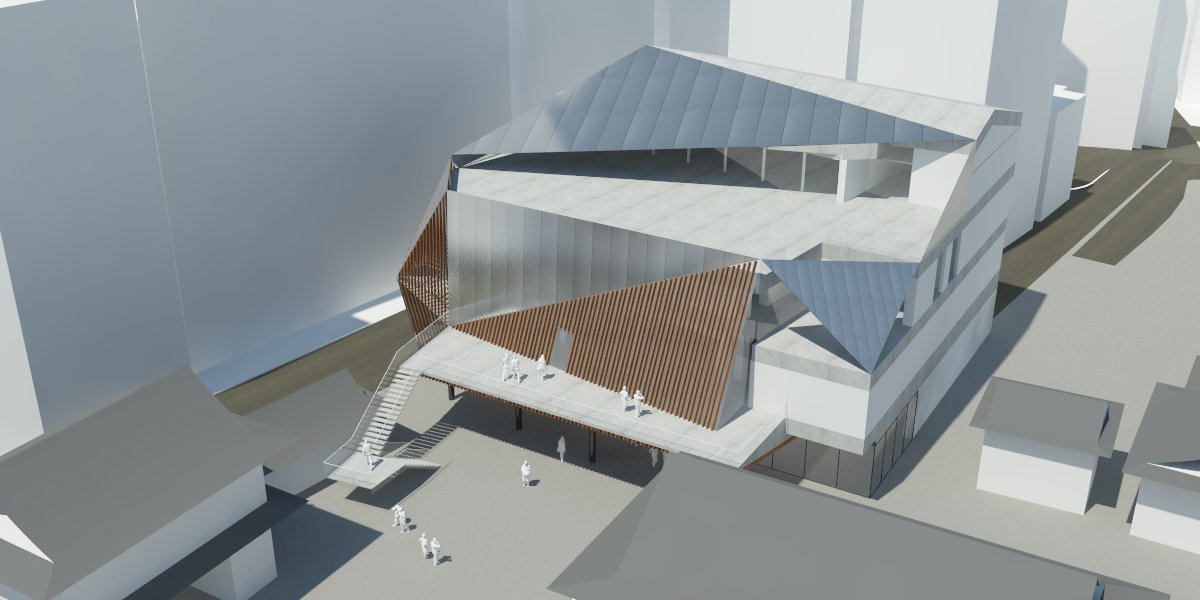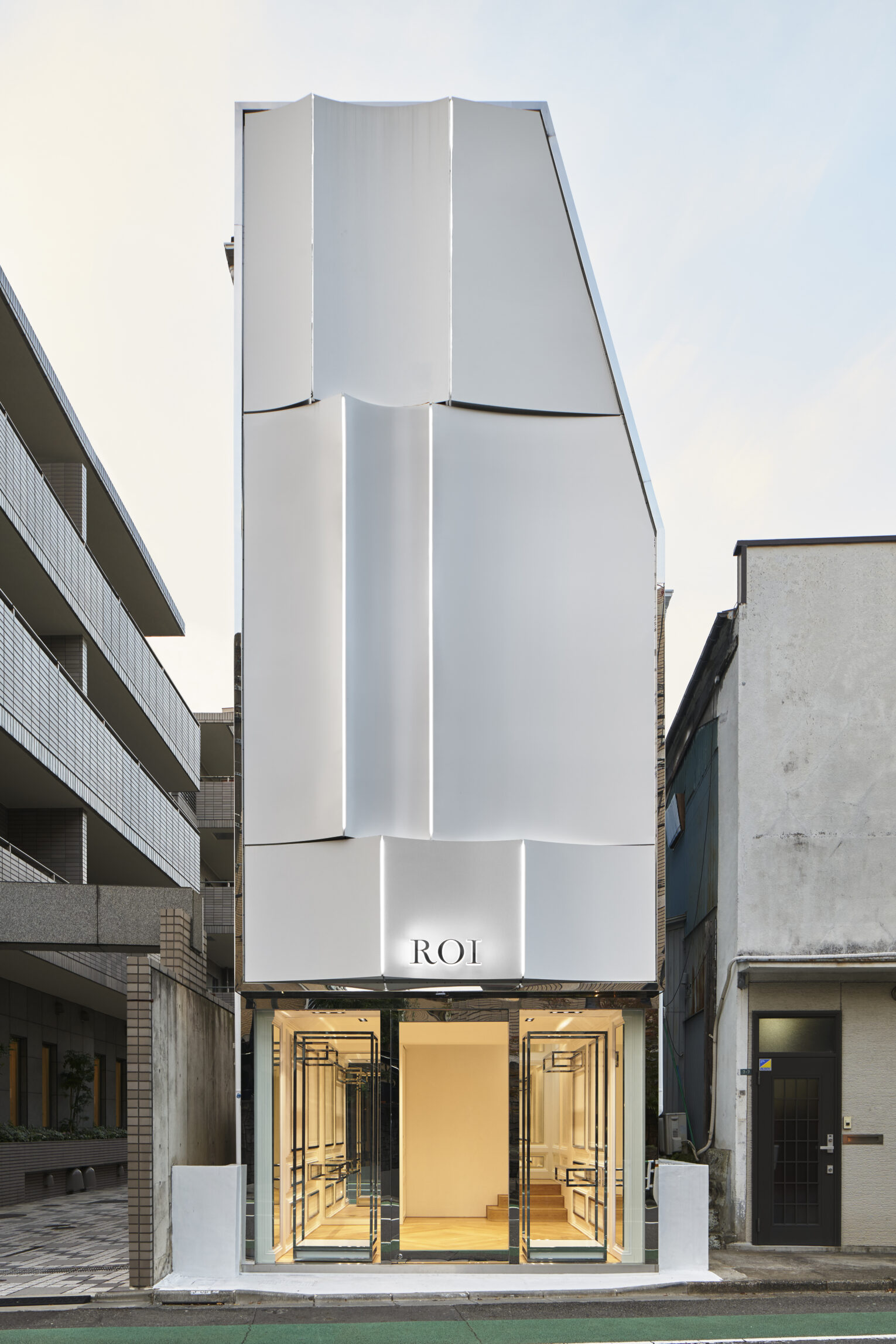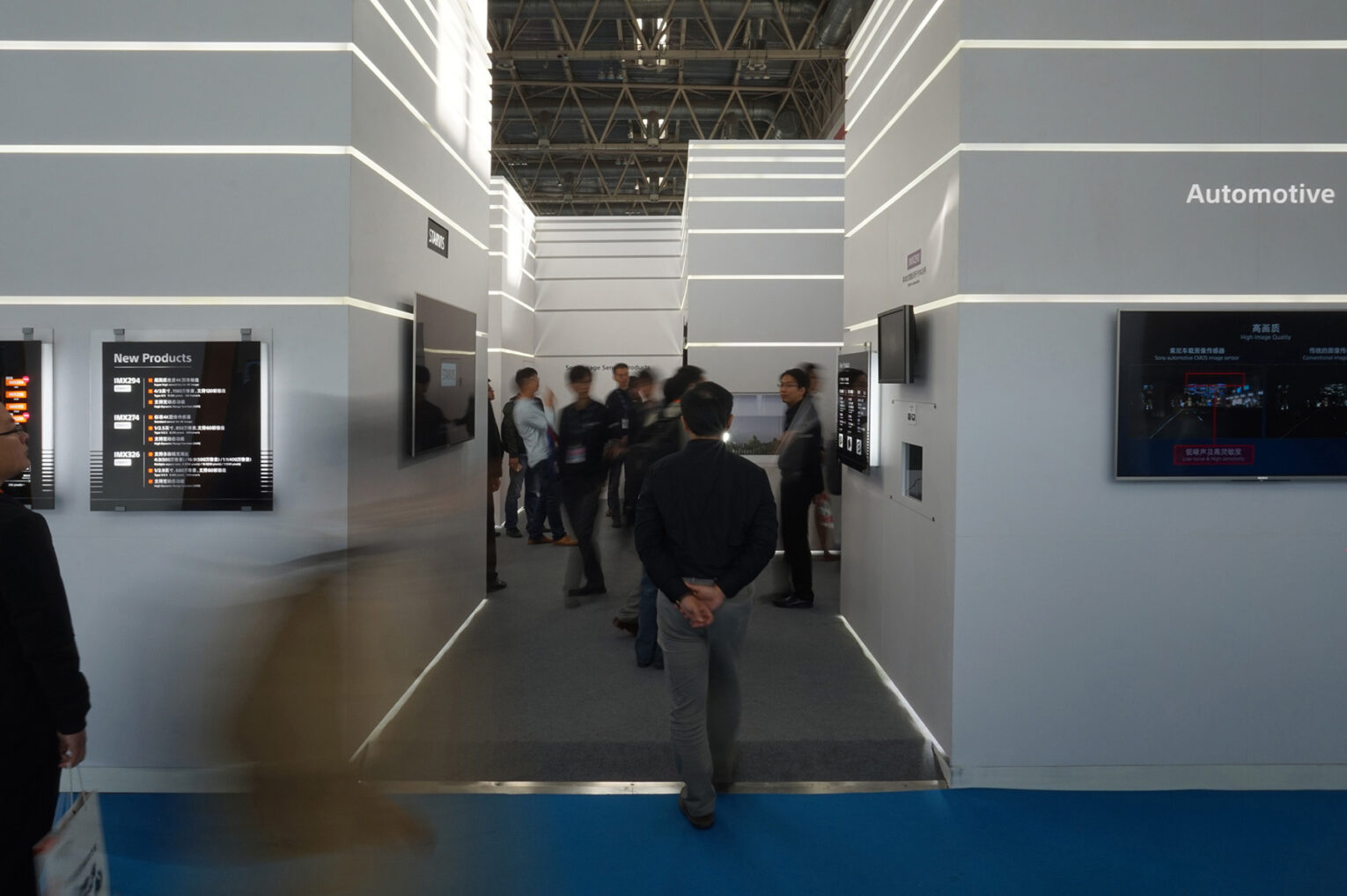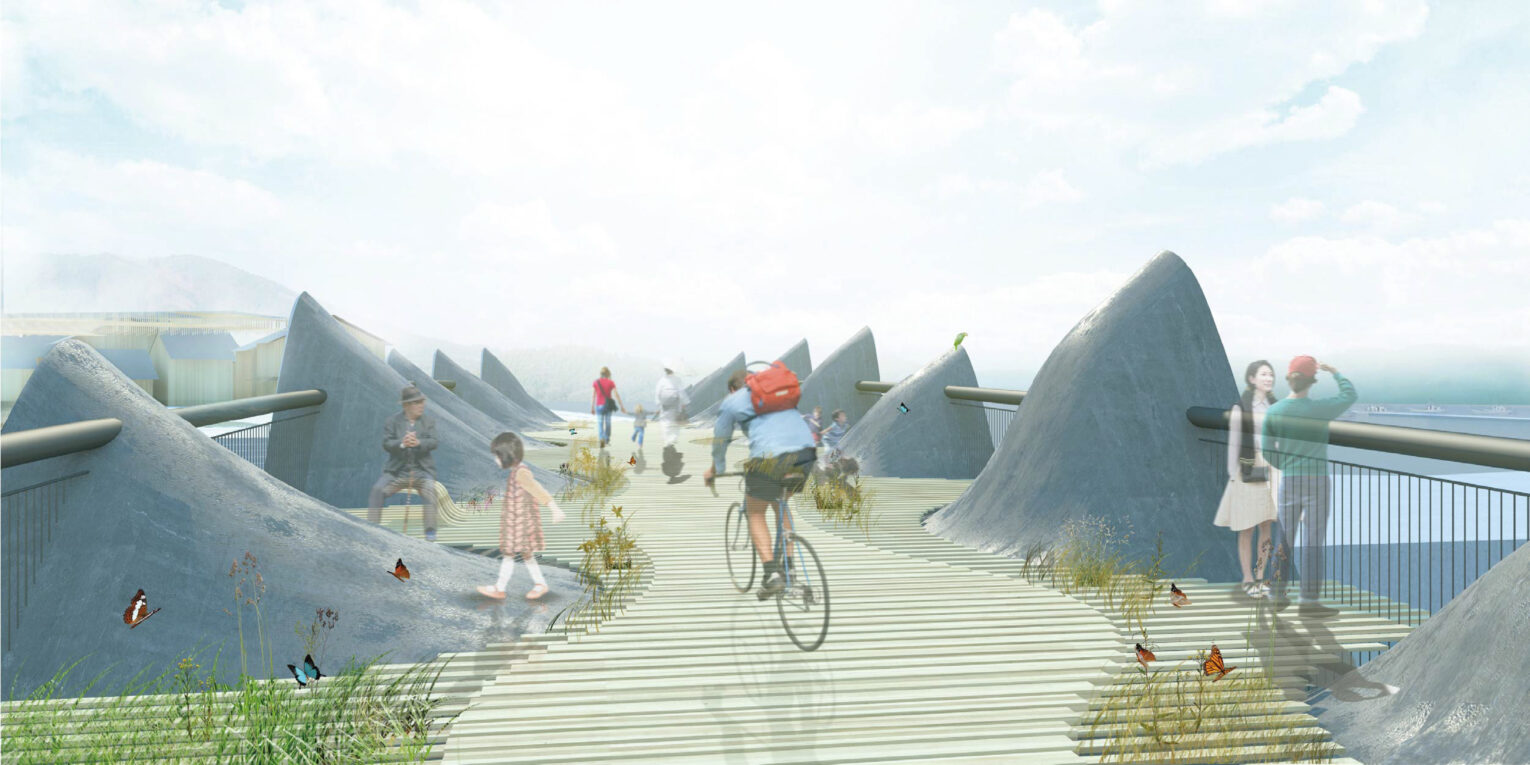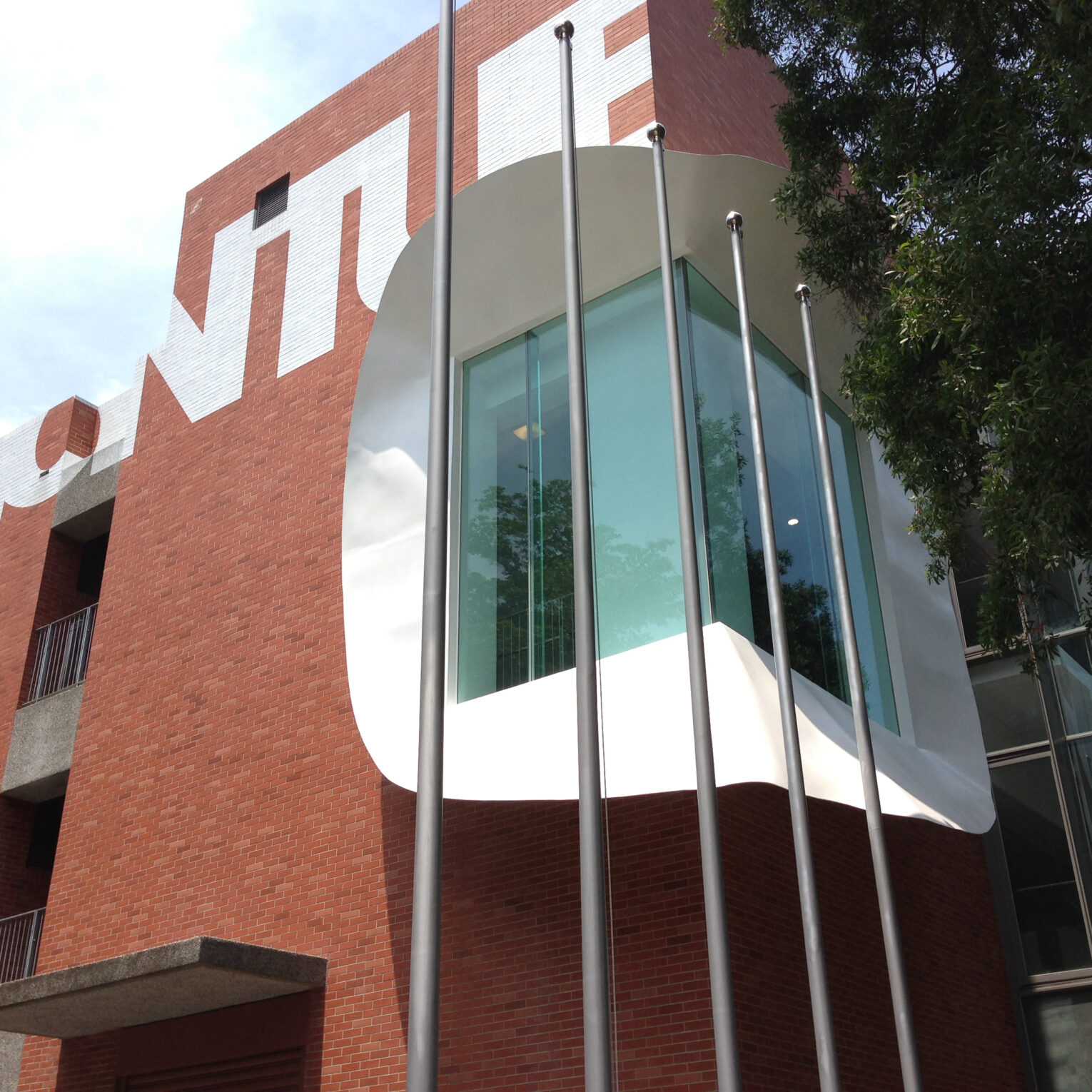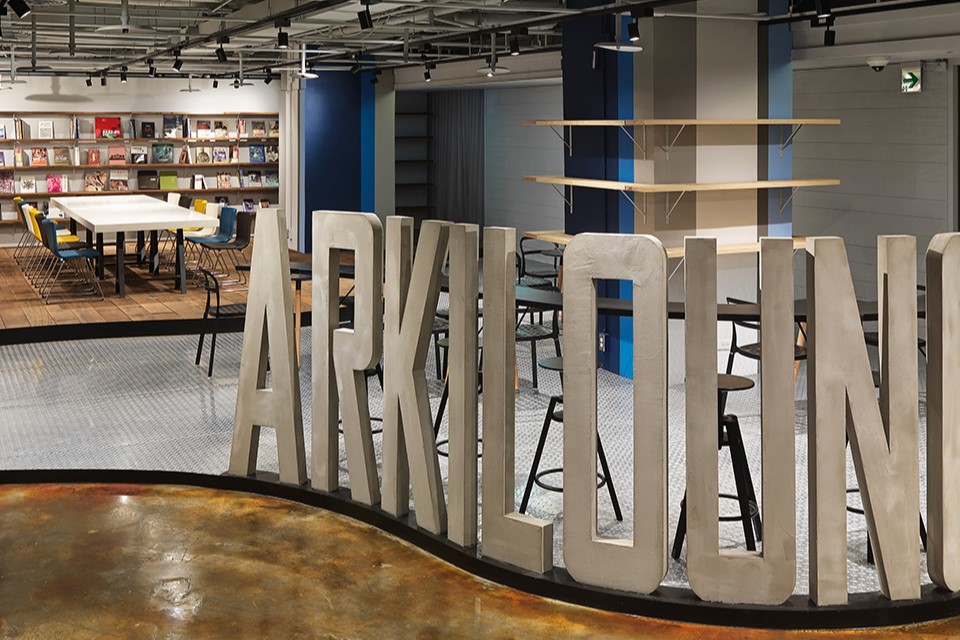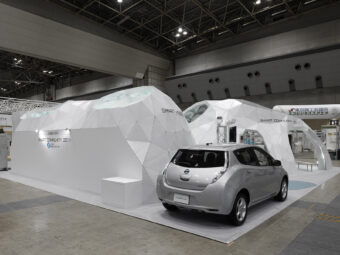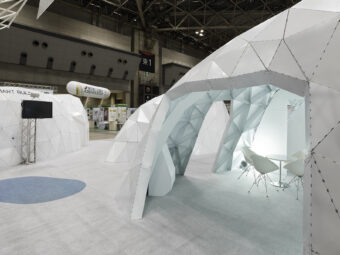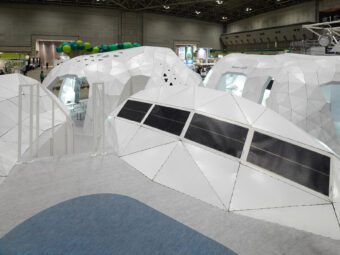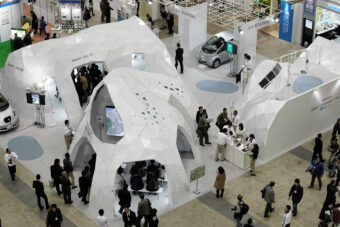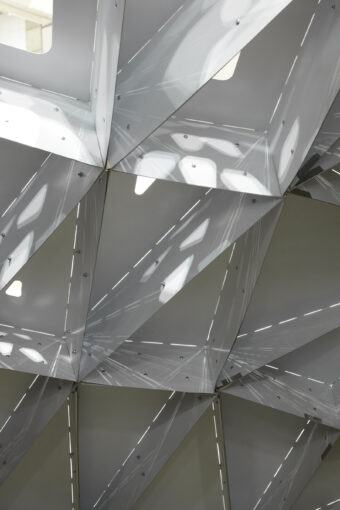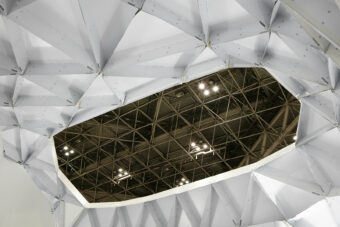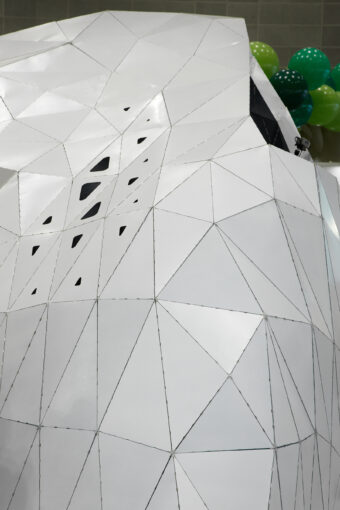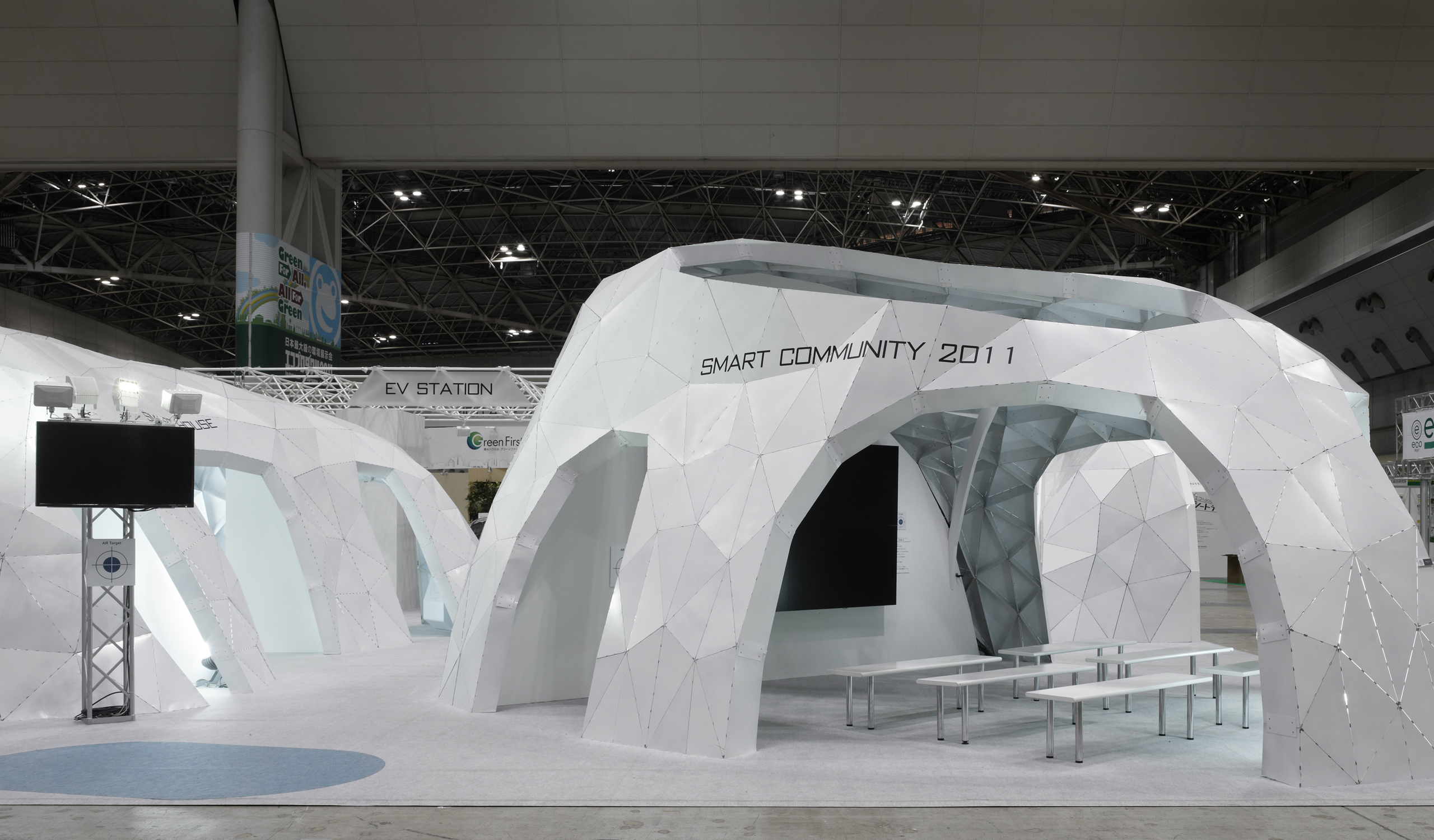
METI Pavilion
2011年末に東京ビッグサイトにおいて開催された「エコプロダクツ2011」において、経済産業省資源エネルギー庁のパビリオンの設計をノイズアーキテクツが担当した。
パビリオンは経済産業省が提唱する近未来型のエコ・コンシャスな社会「スマートコミュニティー」を形成する、実際の都市の一部を想定して計画されている。エネルギー効率や施工性の最適化といったコンセプトに則り、シアター、スマートハウス、スマートビル(屋上部)の3棟が機能別に設計され、来場者に最先端のテクノロジーやプロダクトを伝える為のデモンストレーションが行われた。
スマートコミュニティーでは、全ての建物の表面に現在研究が進められている太陽光発電塗料が塗布されてることが想定されている。パビリオンの形態は敷地形状、周辺環境、気候や高度といった与条件の中で、太陽光を最大限有効に活用することができるようシミュレーションを行うことで決定されている。太陽光を最大限に受けるために、建物の南面は太陽の軌道に合わせて全体的に傾斜している。また、都市全体の風の流れをコントロールし風力発電に利用するため、建物の表面は滑らかな曲面となり、風の抵抗をできるだけなくす形状となっている。建物上部に開いている孔は、採光と自然換気を最適化するように計画されている。
パビリオンの曲面は、厚み0.5mmの紙のように薄い鋼板を折り曲げて作った三角柱型のユニットを組み合わせていくことで構成されている。鋼板は展開図状にレーザーカットされ、手で折り曲げていくとユニットになり、ユニット同士は三角柱の側面同士をボルトで接合されている。一度建物の形状を決定すると、ユニットへの分割とその展開図の施工データが生成されるようシステム化している。各パビリオンの形状は、環境、構造、材料のサイズなど様々なパラメータによって多様な形を取るにもかかわらず、施工のプロセスを可能な限り単純化することにより、形態を変更すると、施工性や環境効率のフィードバックをリアルタイムで受けることができる。全てのユニットの側面には隣り合うユニットの番号が刻印され、ユニット同士の番号を確認すればシステマチックに全体が組み上がるようになっている。
構造を最適化し、可能な限り薄い鋼板を使用したことによって、今回のパビリオンは3棟合わせて1トン未満の鉄しか使用していない。ユニットの展開図の大きさをコントロールすることで、2m x 1m x 1mの箱に全ての材料を梱包して輸送することができ、設営期間はわずか1日半であった。今回開発したデザイン~施工のシステムは非常に汎用的であり、エコロジカルな側面だけでなく、緊急用のシェルターなどに応用できる可能性を持っている。
The Ministry of Economy, Trade, and Industry of Japan commissioned Noiz Architects to design their main pavilion for the Eco Products 2011 Expo located at Tokyo Big Site. In the spirit of the Expo theme, Noiz implemented experimental structural and building system generated by energy optimization and customized fabrication. Total of three pavilions were designed into a theater space, a smart home, and a rooftop terrace to host demonstrations and presentations of innovative technology and products. Together they formed a “smart community” representing a possible state of living environment powered by environmental-conscious technology of the near future.
The pavilions were designed as if they were taken from an entire city-scaled community of similar buildings, the shape of which are defined by their surroundings and orientation to the sun to allow for maximum solar power generation. Depending upon several parametric values such as site shape, building code, surrounding condition, weather, latitude, and etc. A general example of this is that the south facing sides are all generally sloped more closely towards the ideal solar gathering angle of a typical solar panel in a solar energy farm. Additionally, the area between the buildings allows for wind-flow to be controlled and forced into areas where wind turbines can also be used to create energy. Entire cityscape can be Optimized as maximum fluidity, and efficiency for each corner of the town. The shape and openings of the pavilion are also the result of sunlight/heat optimization as well as natural ventilation in limited amount of structure. As new eco-products are being developed for the future, the design of the pavilions and their orientation amongst each other centered around the idea of maximum solar insulation. A recent development in solar generative paint may soon allow the entire surface of a building to become a solar power generator.
The pavilions were constructed by a system of triangular cells made from paper-thin steel plates (t=0.5mm). The plates were each laser-cut so that the fins of cells could be folded by hand and connected to each other by bolt. The entire design followed diverse parameter such as environment, structure and material size. Since the composition and the construction method is quite simple, we could make a real-time feedback loop through the environmental contexts, design and construction data. Each panel is composed of triangular surface and folding ribs which work as connecting device as well . Each surface is given address code inscribed by laser cutting to ensure simple and efficient assemblage. While this project is still a prototype, waterproofing and heat insulation is not included in the system. However, along with structure and cost efficiency, these can be reasonably integrated as parameters in the design/fabrication system and we are working on the next round of prototypes with those being in consideration.
Project Name
METI Pavilion
Information
-
Year
2011
-
Category
Design Category, Exhibition
-
Status
Completed
-
Location
東京, 日本 Tokyo, Japan
-
Photo Credit
阿野太一 Daici Ano
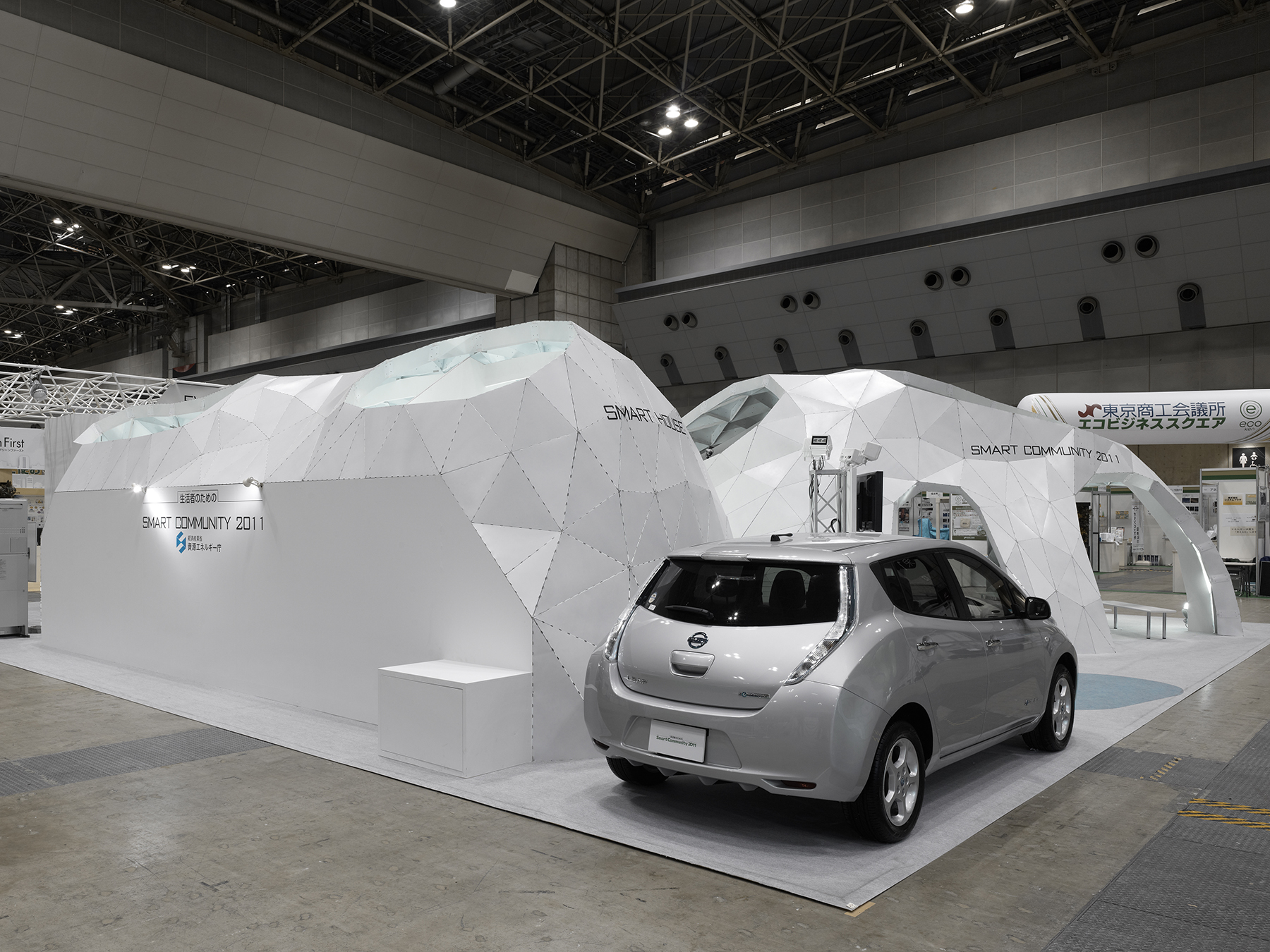
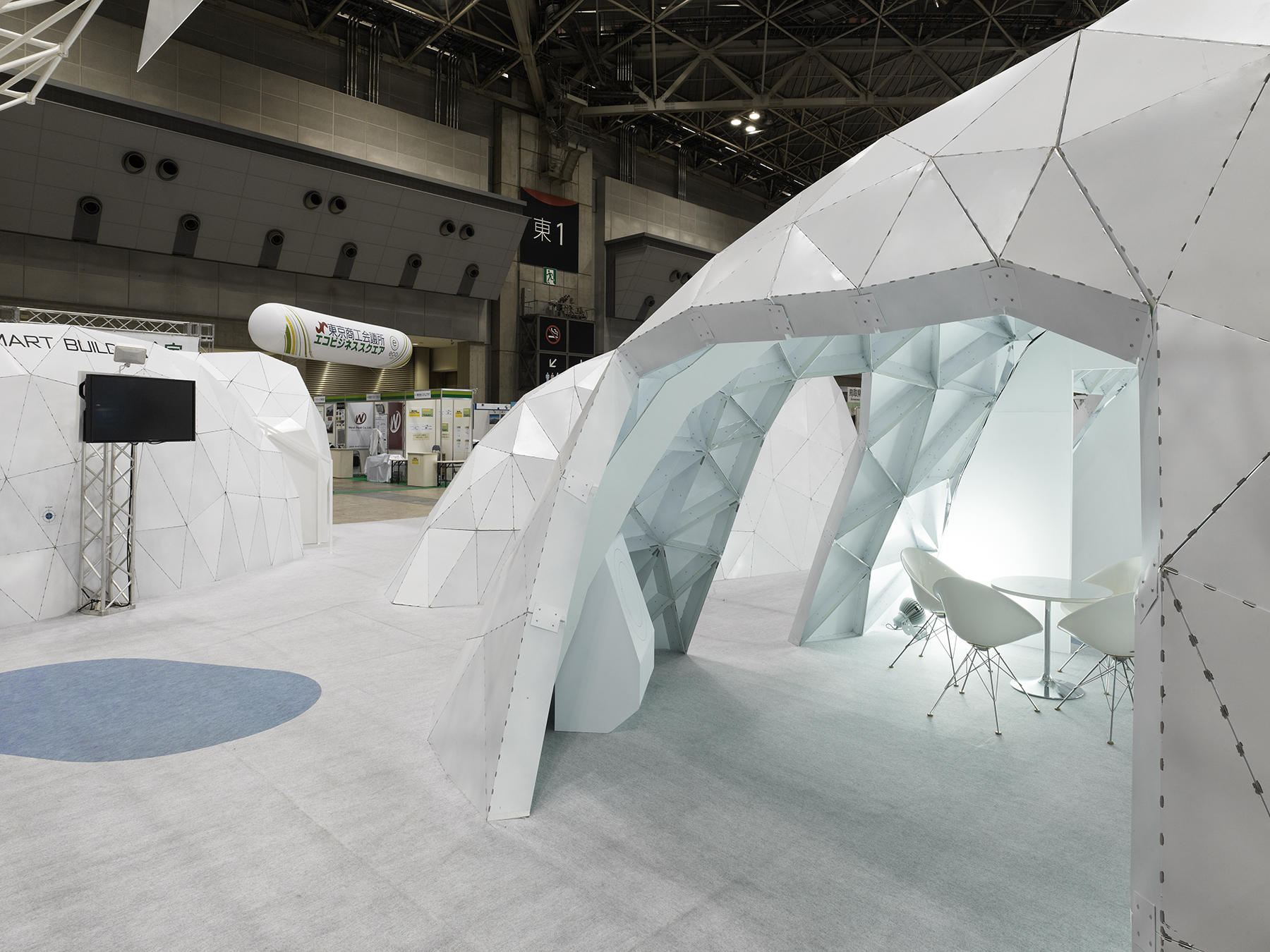
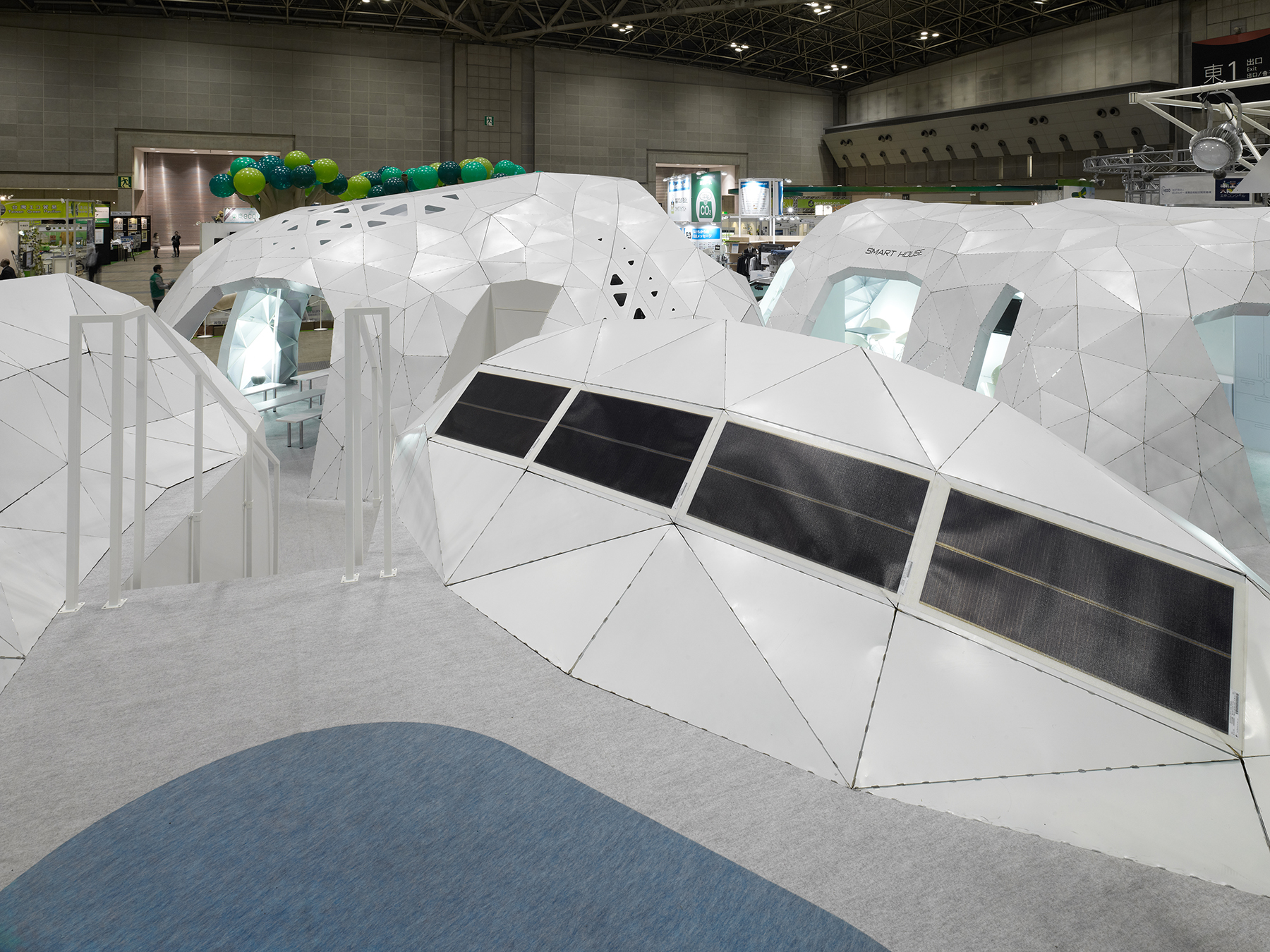
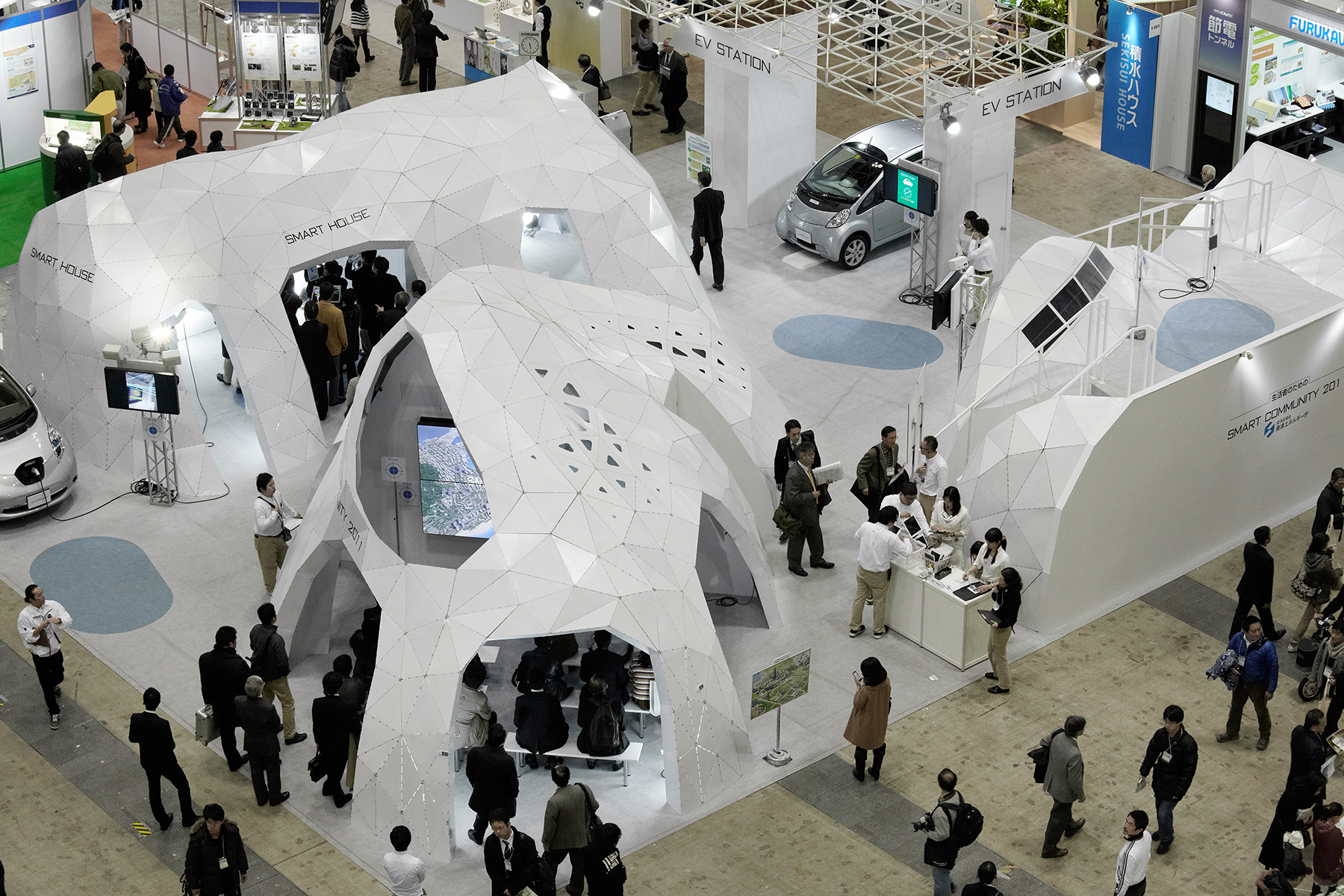
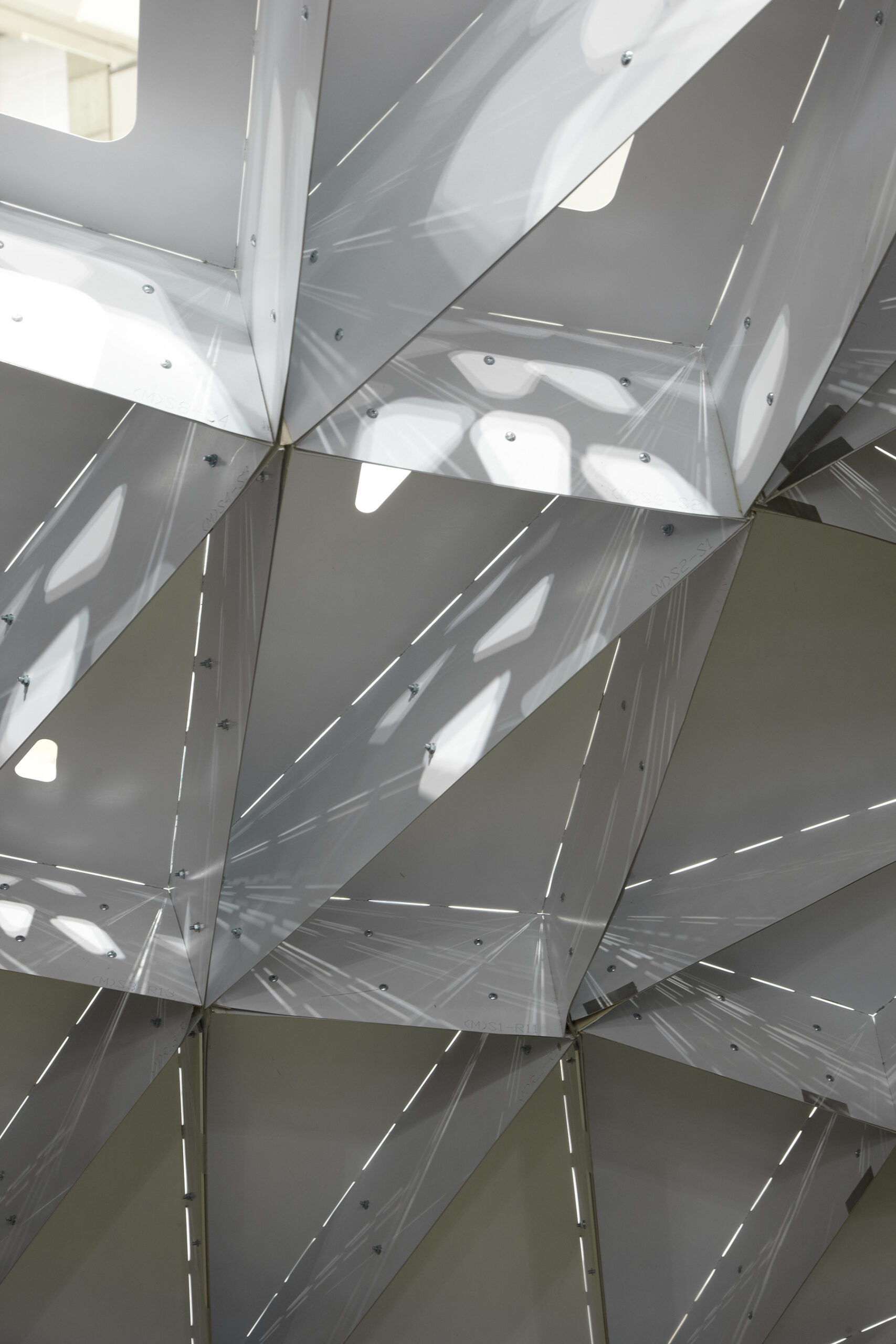
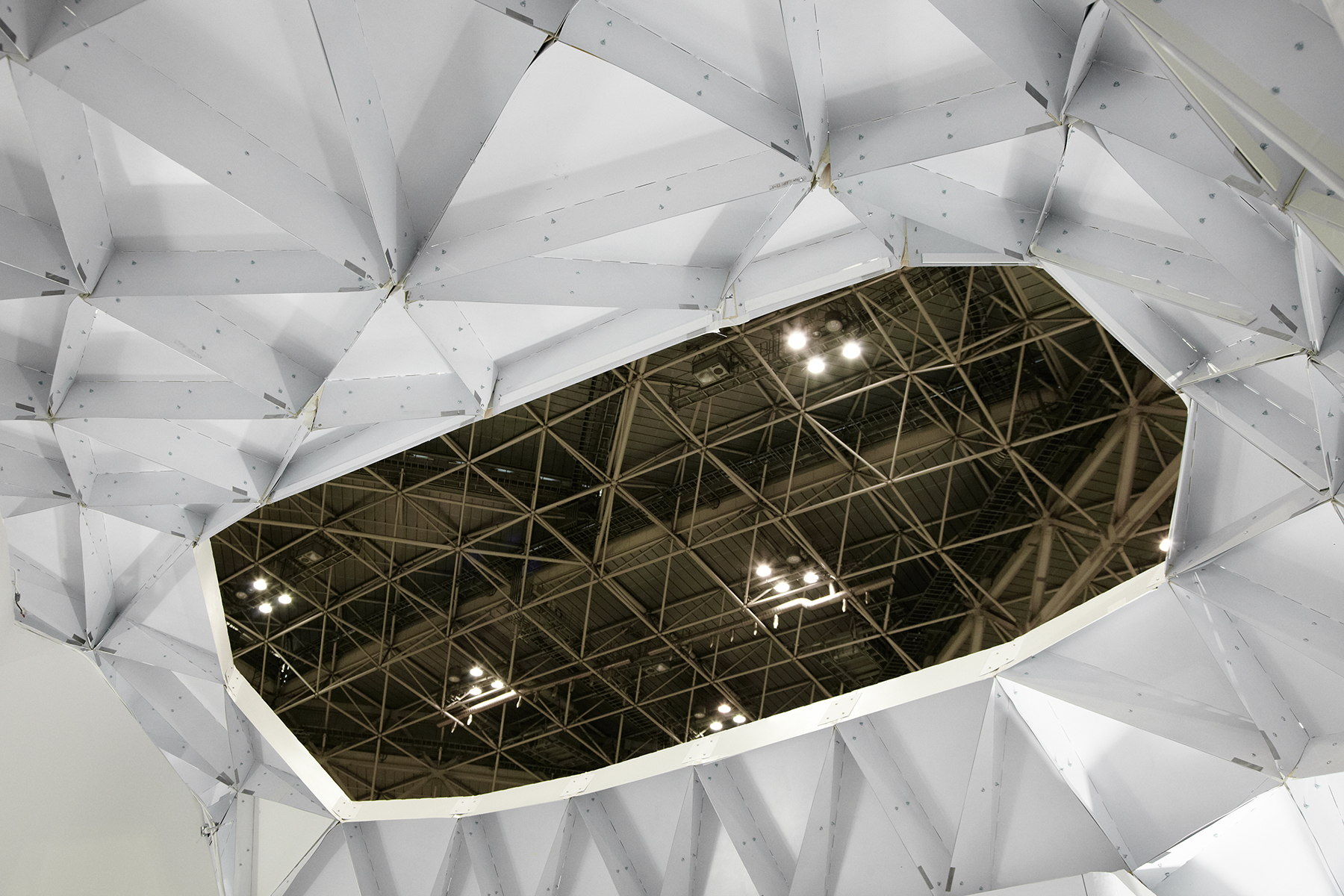
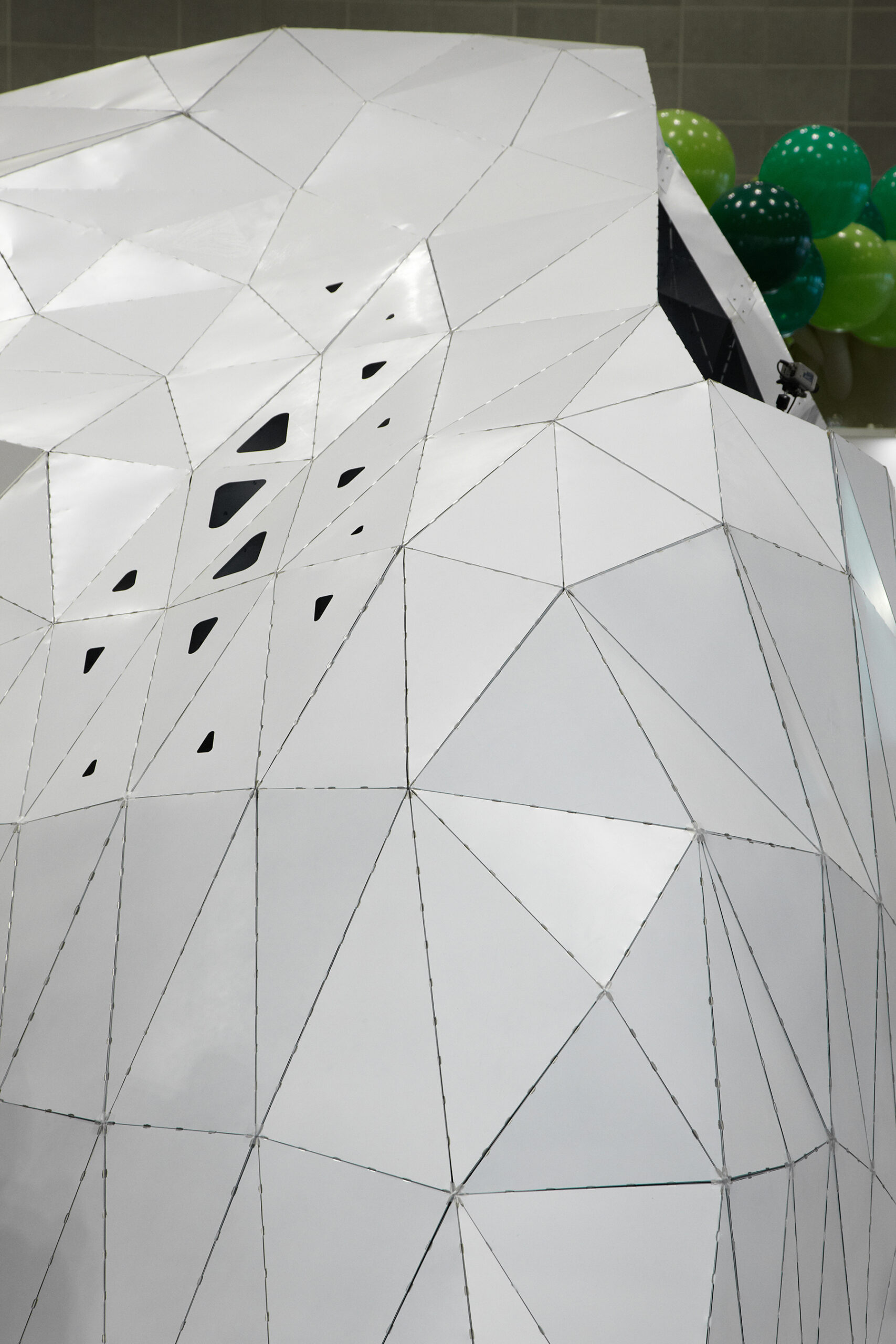
View Detail


